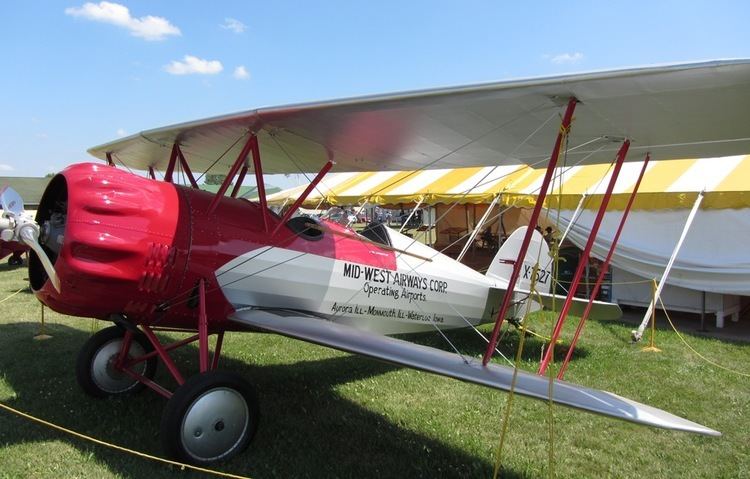Died 1974 Relatives Aden "Bite" Livingston Known for Air racing | Alma mater Lincoln High (1 year) Cause of death Heart attack Name John Livingston | |
 | ||
Resting place Greenwood Cemetery Cedar Falls, Iowa | ||
1930 Ford Air Tour
John H. Livingston (1897–1974) was an American aviator and air race pilot of the 1920s and 1930s. Livingston placed first in 80 national air races.
Contents

Life

John Livingston was born in 1897 in Cedar Falls, Iowa. His first profession was as an automobile and motorcycle mechanic. Livingston first soloed an aircraft in 1920 and started work with The Iowa Airplane Company, later purchasing and managing it as Midwest Airways Corporation. Iowa's first airline with service starting in 1928.
In 1928 Livingston won first place in the Transcontinental Air Derby, flying a Waco 10T from New York to Los Angeles.
In 1930, Livingston purchased a Monocoupe 110 (NC-501W) to use in air racing. Livingston modified the landing gear, engine cowling, engine output, streamlined struts. In 1932 the aircraft went back to the factory to have the wings clipped from 32 feet to 22 feet in length becoming a Monocoupe 110 Special. Livingston would fly the aircraft through rain storms with whitewash paint to find areas of drag. His modifications increased the speed of the monocoupe from 160 to 200 mph. Out of 65 races entered, Livingston placed first 41 times in this aircraft. Livingston sold his aircraft in 1933, and it was entered in the MacRobertson Race flying from England to India where it dropped out. The rebuilt airplane returned to America, killing its next owner Ruth Barron in a 1936 Omaha, Nebraska crash. Livingston's first Monocoupe racer was restored over ten years between 1996 and 2006 and is still flying.
By 1933, Livingston had won more air races than any other pilot. After losing to a pilot flying a Cessna CR-2 racer, Livingston commissioned an even faster Cessna CR-3 racer. His aircraft only lasted 61 days before Livingston had to bail out of the aircraft over Ohio. In that time he won every race he entered with the aircraft. After the season, he went to work for WACO as a test pilot, and was also sponsored in the Baby Ruth Aerobatic Team featuring aircraft tied together with ropes.
In 1939, Livingston returned to air racing in a Monocoupe.
Livingston managed Chapman Airport in Iowa with his brother throughout the 1930s into World War II. He managed a cadet training program with over 1500 students completing basic training.
Livingston retired at Pompano Beach, Florida.
Livingston suffered a heart attack and died shortly after test flying a Pitts Special at the age of 76. Livingston was inducted into the Iowa aviation Hall of Fame in 1995.
His Waco taperwing has been donated to the EAA AirVenture Museum in Oshkosh, Wisconsin where it has been restored.
Races
In popular culture
John Livingston is considered to be the inspiration and namesake for the book and film Jonathan Livingston Seagull by author and pilot Richard Bach.
Legacy
Livingston-Betsworth Field, as well as the fixed-based operator at the Waterloo, Iowa municipal airport, are named in his honor.
